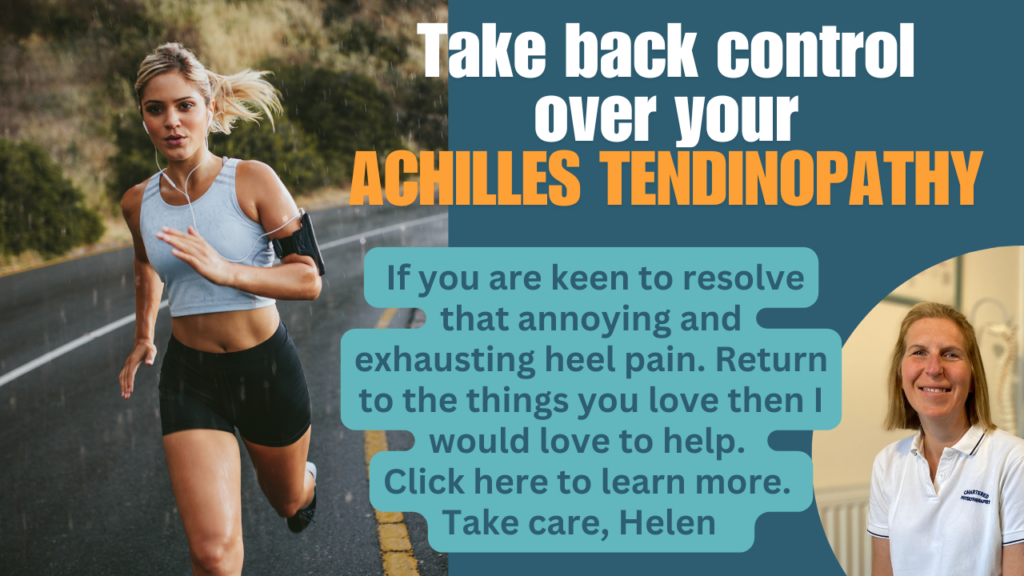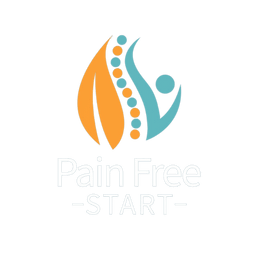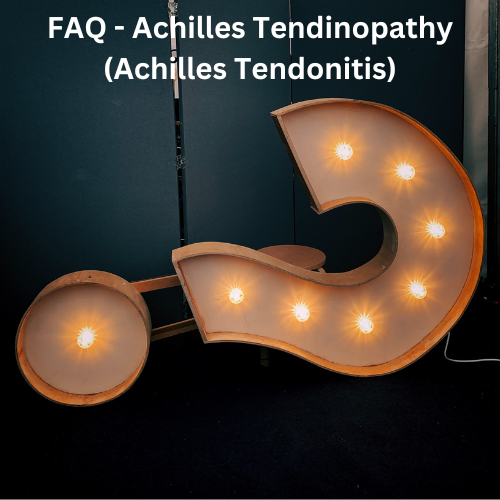Achilles tendinopathy (sometimes called Achilles tendonitis) is a stubborn, frustrating injury that can drag on for months if not treated correctly. I’ve seen countless patients walk into my clinic exhausted—some have tried resting, others have stretched it endlessly, and some have even had well-meaning family members massage it (which often makes things worse!).
If you’re dealing with Achilles pain, you probably have a lot of questions: Will it ever heal? Should I keep walking on it? Is stretching helping or hurting? I get these questions all the time, so I’ve put together this FAQ to clear up confusion and help you recover faster.
TOP TIP – Need expert guidance? My Achilles Tendinopathy Program walks you step-by-step through the exact rehab process. You can learn more [here].
Not sure if you have Achilles tendinopathy?
So this is the first step – getting a correct diagnosis. Otherwise, we could be treating the wrong thing. I would love to help you confirm the diagnosis there are 3 ways I can do this.
- Join me for a FREE Masterclass, where together we assess your tendon and find out what is going on. To learn more about this FREE Assessment and enrol, click here.
- Come and see me in clinic if you are local. Details on the website.
- This blog may be helpful. Have you had Achilles tendonitis (tendonitis)? Find out now.
Now, let’s dive into the most common questions!
FAQs About Achilles Tendinopathy (Tendonitis)
Does Achilles Tendinopathy Ever Heal?
Yes, but it takes time and the right approach. Recovery happens in two key stages:
- Acute Stage (Weeks 1–2) – Pain and inflammation settle if managed properly.
- Rehabilitation Stage (3–6 Months) – The tendon must be strengthened and reconditioned to prevent reinjury.
Skipping the second stage is one of the biggest reasons Achilles pain keeps coming back!
Learn how to rehab your Achilles properly in my step-by-step Achilles Recovery Program.
Is Achilles Tendinopathy Permanent?
It can be—if not treated correctly. Many people mistakenly think the pain going away means they’re healed. In reality, the tendon may still be weak and prone to reinjury or even rupture. The key to full recovery is progressive loading—exercises that restore strength and tendon health.
Should You Massage Achilles Tendinopathy?
No, and here’s why. A sore Achilles often hates direct pressure—massage can actually increase irritation in the early stages. A better approach is to offload the tendon initially and focus on graded strengthening exercises as it heals.
Should You Use a Walker Boot, Insole, or Night Splint?
Walker Boot: Not usually necessary and can cause other issues.
Insoles: This can be helpful for some people, especially if foot mechanics are contributing to the problem.
Night Splints: These may help reduce morning stiffness but aren’t a must for everyone.
Top Tip: A proper biomechanical assessment can help determine what’s right for you. There is a biomechanical assessment included in my rehab program to help offload the tendon.
What Exercises Should I Avoid?
To prevent aggravating your Achilles, avoid:
❌ Running, jumping, or sprinting too soon.
❌ Prolonged walking on hills or uneven ground.
❌ Excessive stretching (it often makes things worse).
❌ Deep squatting or activities that put excessive strain on the tendon.
Instead, focus on controlled strengthening exercises that build tendon resilience.

Resolve Pain Quickly On My Physio Led Program. Click to learn more.
What’s the Fastest Way to Heal Achilles Tendinopathy?
The key is progressive loading—getting the balance just right between rest and movement. The gold-standard approach includes:
✔ Protection: Avoid activities that flare up the pain.
✔ Optimal Loading: Reduce strain but don’t completely rest.
✔ Ice (Early Stage): Helps manage pain and inflammation.
✔ Gradual Strength Training: Specific calf exercises are crucial for long-term recovery.
Should I Rest Achilles Tendinopathy?
Complete rest is a mistake!
While you should reduce painful activities, tendons need movement to heal. Rest can actually make the tendon health worse – tendons need loading. Instead of full rest, modify your activity and start structured rehab exercises.
Do You Need Surgery for Achilles Tendinopathy?
Not usually. Most cases improve significantly with the right rehab. Surgery is a last resort if all conservative treatments fail. Shockwave therapy is an option for stubborn cases, but it should always be combined with exercise-based rehab.
NOT SURE IF YOU HAVE ACHILLES TENDINOPATHY/TENDONITIS? – Click to learn more and enrol for FREE

Do Calf Raises Help Achilles Tendinopathy?
Yes! But they must be done correctly at the right time in your recovery. Key factors include:
✔ Bent-knee vs. straight-leg raises (target different parts of the Achilles). Both are essential for most.
✔ Progressing from body weight to resistance.
✔ Eccentric vs. concentric loading.
Top Tip – Get the exact exercise progressions in my Achilles Tendon Program!
Why Won’t My Achilles Tendonitis Get Better?
If your Achilles pain won’t go away, chances are:
You’re not loading it correctly (too much or too little activity).
You haven’t addressed the root cause (biomechanics, foot position, etc.).
You’re skipping key rehab stages.
Top Tip – Stop guessing—get a structured recovery plan that works.
Helpful Resources
You may find these blogs helpful;
Has running caused my Achilles Tendinopathy?
Top Footwear Choices for Achilles Tendon Support
Have you got Achilles Tendinopathy (tendonitis)? Find out now.
Best Running Shoes for Achilles Tendinopathy: A Physio’s Guide
Eccentric Loading – Is This The Magic Ingredient In Achilles Tendinopathy?
The Worst Shoes for Achilles Tendinopathy: What to Avoid for Optimal Recovery
Final Thoughts
Achilles tendinopathy is frustrating, but with the right treatment, you can fully recover. The key is understanding what to do (and what not to do).
Ready to take control of your recovery? Join my Achilles Rehab Program for expert guidance and step-by-step rehab.
Take care, Helen
Helen Manders BSc (Hons) MCSP HCPC
Chartered Physiotherapist Treating Achilles Tendons Since 2001
FREE Masterclass – Take your place now. Together we assess your tendon and look at how to move forward. I would love to see you there. Click to learn more or enrol.
Resolve Pain Quickly On My Physio Led Program. Click to learn more.



